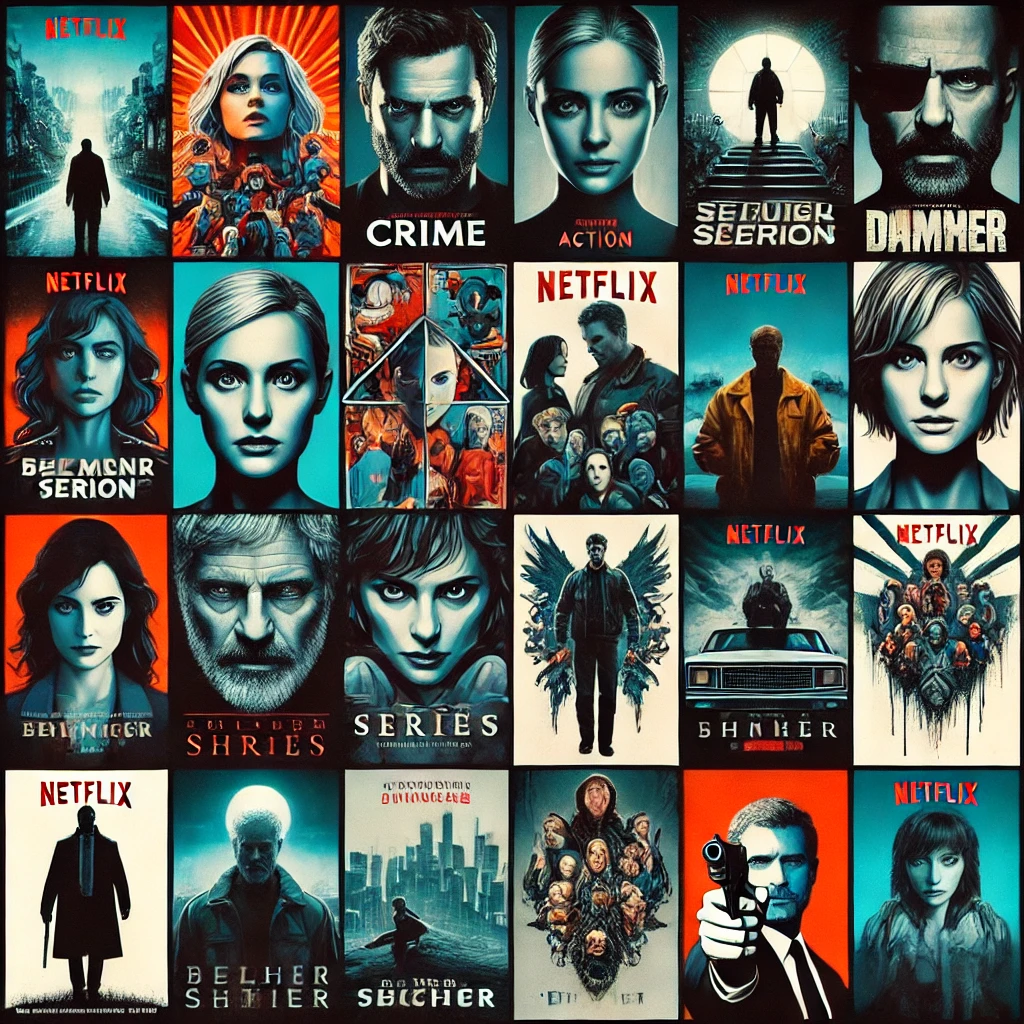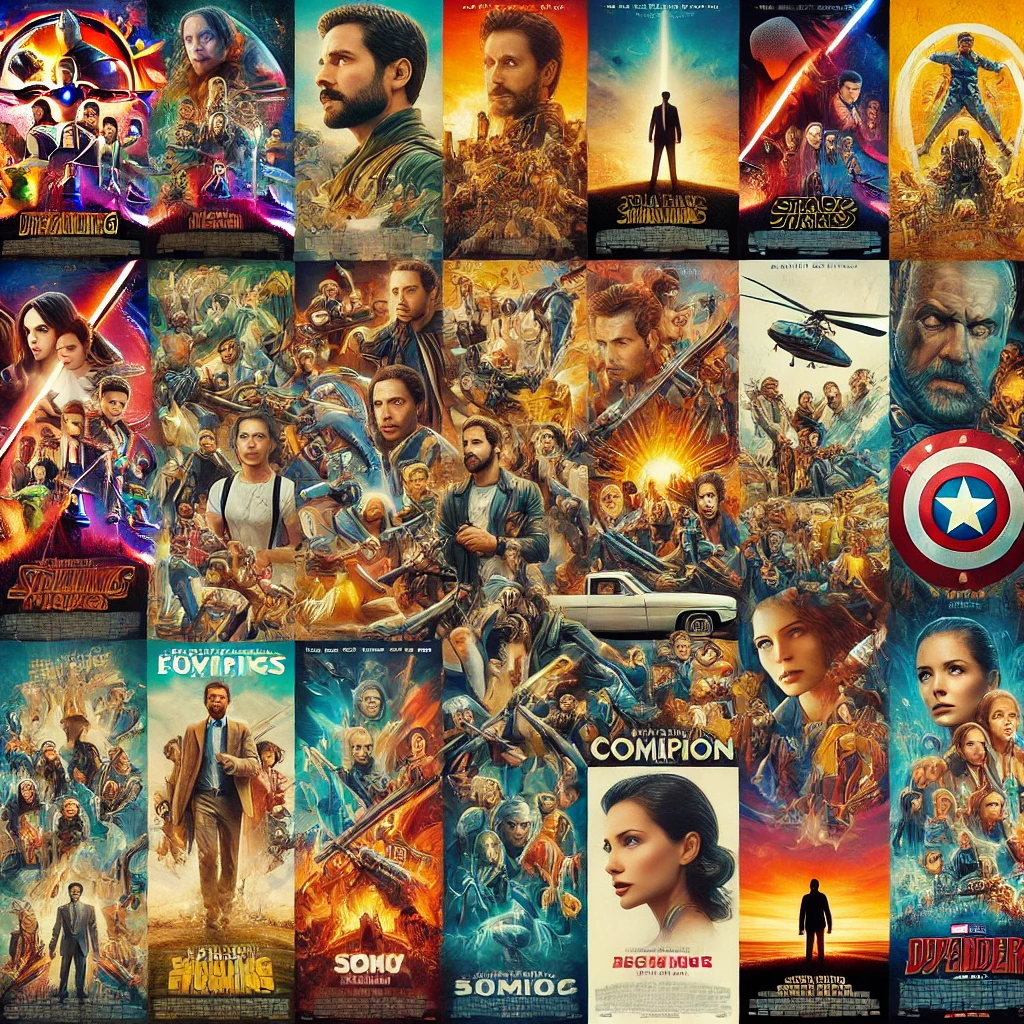When discussing top-rated movies, it usually refers to films that have received high scores and widespread praise from critics and audiences. These ratings are often compiled by trusted sources like Rotten Tomatoes, IMDb, Metacritic, or film festivals such as Cannes and the Academy Awards. Here’s a detailed look at what constitutes top-rated movies:
1. Rotten Tomatoes “Certified Fresh”
- Rotten Tomatoes scores movies based on critic reviews. A film gets the Certified Fresh status when it meets these conditions:
- At least 60 reviews from recognized critics.
- It must maintain this score after a certain number of reviews have been published.
- Examples: Parasite (99%), Mad Max: Fury Road (97%).
- see more information

2. IMDb High-Rating (8.0+)
- IMDb aggregates ratings from users around the world. A top-rated movie on IMDb usually has:
- A score of 8.0 or above, based on tens of thousands to millions of votes.
- High replay value and strong viewer engagement.
- Examples: The Shawshank Redemption (9.3/10), The Godfather (9.2/10).
3. Metacritic’s Metascore (81 and Above)
- Metacritic aggregates reviews from professional critics to form a Metascore. A top-rated movie here:
- Has a score of 81 or above out of 100.
- It reflects an overall positive consensus from both film experts and niche reviewers.
- Examples: The Social Network (95), Moonlight (99).
4. Award Recognition (Oscars, Golden Globes, etc.)
- Award-winning films often receive high critical ratings.
- They dominate categories like Best Picture, Best Director, Best Actor/Actress.
- Many films that receive major awards become top-rated due to critical acclaim and mass appeal.
- Examples: Schindler’s List, La La Land, 12 Years a Slave.
5. Audience Scores & Popularity
- Sometimes, a film may not have high critic ratings but can have immense fan appeal and positive user reviews.
- Films that resonate emotionally with audiences, spark nostalgia, or create a cult following get high audience scores.
- Examples: The Dark Knight (94% on Rotten Tomatoes audience score), Avengers: Endgame.
6. Genre Standouts
- Each genre has its standout films that are often considered top-rated within their niche:
- Drama: The Godfather, Forrest Gump.
- Science Fiction: Inception, Blade Runner 2049.
- Romantic: Titanic, The Notebook.
- Horror: The Exorcist, Get Out.
7. Box Office Success
- While not always a measure of quality, movies that have a high box-office gross and stay in theaters for long periods are often considered top-rated.
- Examples: Avatar, Avengers: Infinity War, Jurassic Park.
8. Cultural Impact and Legacy
- Some movies might not have the highest critical or audience ratings but are seen as top-rated due to their influence on film and culture.
- They may introduce new filmmaking techniques, iconic quotes, or revolutionary storytelling styles.
- Examples: Pulp Fiction, Star Wars: A New Hope.
9. Festival Wins (Cannes, Sundance, etc.)
- Winning at prestigious international film festivals often signals that a movie is of high quality.
- Films that win or are featured prominently in these festivals get critical attention, boosting their status as top-rated.
- Examples: Parasite (Cannes winner), Call Me by Your Name (Sundance).
Characteristics of Top-Rated Films:
- Strong direction by experienced or innovative filmmakers (e.g., Martin Scorsese, Quentin Tarantino).
- Compelling performances from actors and actresses.
- Engaging and original screenwriting, often with memorable dialogue.
- High production value with excellent cinematography, special effects, and sound design.
- Emotional resonance, making it rewatchable and relevant across different generations.
Lists of Top-Rated Movies:
- IMDb Top 250 – Based on user votes.
- Examples: The Shawshank Redemption, The Godfather, The Dark Knight.
- Rotten Tomatoes All-Time Best – Based on critic reviews.
- Examples: Parasite, Black Panther, Citizen Kane.
- Metacritic’s Best-Reviewed Movies of All Time.
- Examples: Boyhood, Pan’s Labyrinth.
These resources and criteria are generally considered when evaluating top-rated movies, and they cover a wide range of both critical and popular opinions.
Eclipse of the Titans
A blockbuster movie refers to a film that achieves massive financial success, widespread popularity, and often becomes a cultural phenomenon. Blockbusters typically feature big-budget productions, star-studded casts, and extensive marketing campaigns to attract large audiences. They are often associated with high-octane entertainment, large-scale action, and impressive special effects. Here’s a detailed look at blockbuster films:
1. Box Office Performance
- Blockbusters are known for their huge box office earnings, often grossing hundreds of millions to billions of dollars globally.
- They often break opening weekend records and have long runs in theaters.
- Many blockbusters have sequels, prequels, or spin-offs because of their financial success.
- Examples: Avatar ($2.9 billion), Avengers: Endgame ($2.798 billion), Titanic ($2.2 billion).
2. Big Budgets
- Blockbusters are typically produced with enormous budgets, often over $100 million or more.
- Large budgets are spent on A-list actors, directors, high-end CGI (Computer-Generated Imagery), marketing, and large-scale production designs.
- The studios behind these films are banking on a return that will far exceed their investment.
- Examples: Avengers: Infinity War ($325 million budget), Justice League ($300 million), Pirates of the Caribbean: On Stranger Tides ($379 million).
3. Wide Audience Appeal
- Blockbusters are designed to appeal to the widest possible audience across different demographics (children, teens, adults).
- They are often action-packed, with thrilling sequences, elaborate set pieces, and visual effects.
- They feature universal themes like heroism, good vs. evil, love, and adventure to capture global interest.
- Examples: Star Wars: The Force Awakens (Sci-Fi/Fantasy), Jurassic World (Adventure), The Lion King (Animated).
4. Tentpole Films
- A blockbuster is often a tentpole movie, meaning it’s the centerpiece of a studio’s release schedule.
- Studios rely on tentpole films to generate revenue to support smaller projects.
- Blockbusters usually release during prime seasons like summer or holiday periods when people are more likely to go to theaters.
- Examples: Marvel’s Avengers series is Disney’s tentpole franchise, while Harry Potter was Warner Bros.’ tentpole series.
5. Franchise Films
- Many blockbuster movies are part of long-running film franchises or cinematic universes.
- Studios often capitalize on the success of a blockbuster by producing sequels, spin-offs, or prequels.
- Examples: Star Wars, The Marvel Cinematic Universe (MCU), Fast & Furious, The Lord of the Rings.
- These movies create loyal fanbases and merchandise sales in addition to box office earnings.
6. Marketing and Merchandising
- Blockbusters have massive marketing campaigns, which include trailers, posters, TV spots, and digital advertising.
- Merchandising is a huge component, including toys, clothing, video games, and themed experiences (e.g., theme park rides).
- Studios often partner with brands for tie-ins, and the promotional push can sometimes rival the budget of the film itself.
- Examples: Star Wars toys, Frozen costumes, Avengers lunchboxes.
7. Star Power
- Blockbusters often feature A-list actors who have global appeal. Their presence alone can draw massive attention to a movie.
- Major stars like Robert Downey Jr., Dwayne “The Rock” Johnson, Tom Cruise, and Scarlett Johansson have headlined some of the biggest blockbusters.
- Star power combined with the promise of spectacle ensures huge opening weekends at the box office.
8. High Entertainment Value
- Blockbusters are typically characterized by high entertainment value, offering audiences a thrilling, fun, and often emotional cinematic experience.
- Elements include action, adventure, special effects, comedy, and romance.
- They are made to entertain, with big set pieces, iconic moments, and exciting soundtracks.
- Examples: Independence Day (1996), The Avengers (2012), Avatar (2009).
9. Summer Blockbusters
- The term “blockbuster” historically began with summer releases. The first true summer blockbuster was Jaws (1975), directed by Steven Spielberg.
- It became the blueprint for future blockbusters—massive marketing campaigns, a wide release, and attracting large crowds.
- After Jaws, the summer season became synonymous with big-budget, high-stakes movies aimed at massive audiences.
- Examples of summer blockbusters: Jurassic Park (1993), The Dark Knight (2008), Transformers (2007).
10. Cultural Phenomena
- Some blockbusters go beyond box-office success to become cultural landmarks.
- These films shape pop culture, create new trends, and influence other media (e.g., comics, books, TV shows).
- Star Wars (1977) revolutionized sci-fi and film merchandising, while The Matrix (1999) introduced new filmmaking techniques like “bullet time.”
- Memorable quotes, characters, and scenes from these movies become ingrained in popular culture.
11. Global Reach
- Blockbusters often find success not only in their home country but also internationally.
- Studios take great care in ensuring that their films are accessible and appealing to global audiences.
- Localization, dubbing, and subtitles allow these films to reach diverse markets across Asia, Europe, Latin America, and Africa.
- Some blockbusters even tailor specific elements for different markets (e.g., scenes specifically shot for Chinese audiences).
- Examples: Furious 7 (grossed $1.5 billion globally), Frozen II (grossed $1.45 billion globally).
12. Technological Advancements
- Blockbusters are often at the forefront of new technology in filmmaking.
- Innovations like 3D, IMAX, CGI, and motion capture are frequently utilized to create awe-inspiring visuals and immersive experiences.
- Movies like Avatar (2009) pushed the boundaries of 3D technology, while The Lord of the Rings franchise advanced motion-capture technology (Gollum’s character).
- These technological leaps often make blockbuster films must-see events.
Notable Blockbuster Movies:
- Jaws (1975) – The first true summer blockbuster, revolutionizing the film industry.
- Star Wars: A New Hope (1977) – The original blockbuster franchise, changed merchandising and visual effects.
- The Avengers (2012) – The first major crossover event in the MCU, setting a new standard for superhero films.
- Avatar (2009) – Groundbreaking 3D technology and a global box-office record.
- Jurassic Park (1993) – A thrilling adventure that combined revolutionary CGI with practical effects.
- Titanic (1997) – A historical drama that became a massive cultural and financial success, sweeping the Oscars.
- Frozen (2013) – An animated musical that became a global phenomenon, loved by children and adults alike.
Blockbusters continue to be a dominant force in the entertainment industry, blending spectacle, star power, and technology to create films that not only achieve financial success but also become cultural touchstones.

see more


